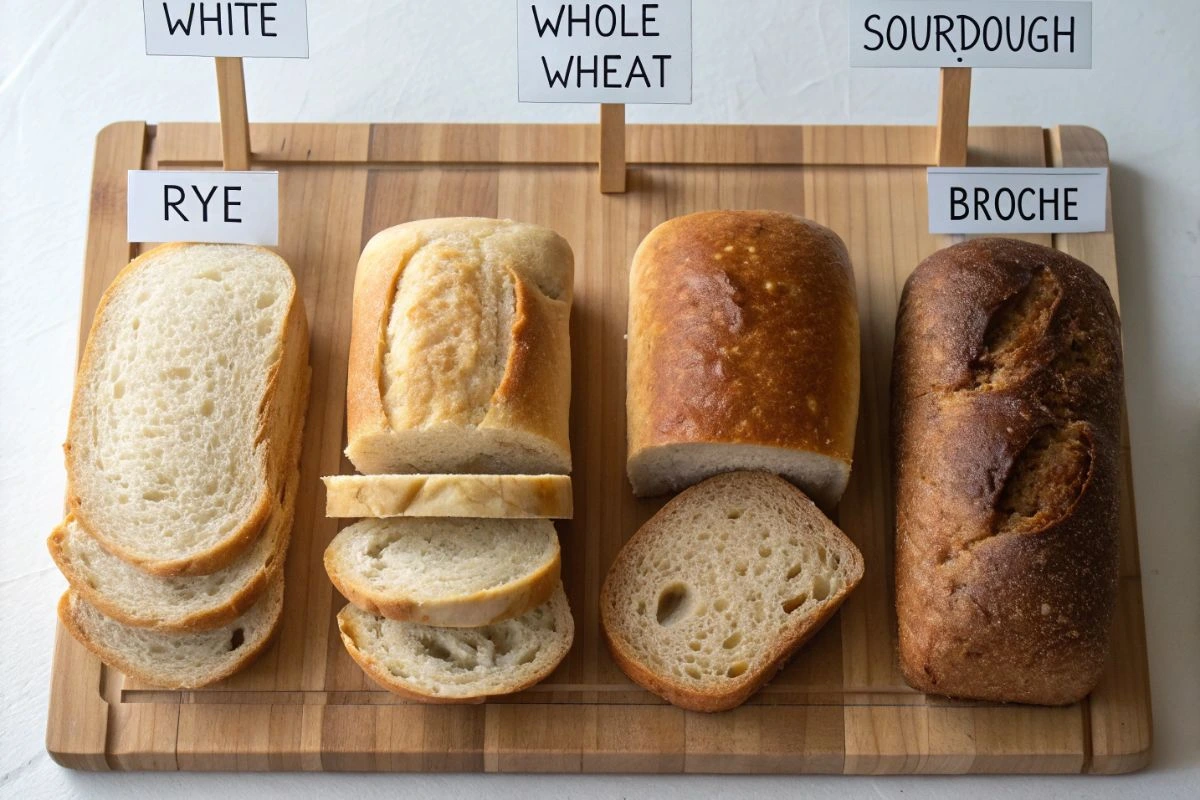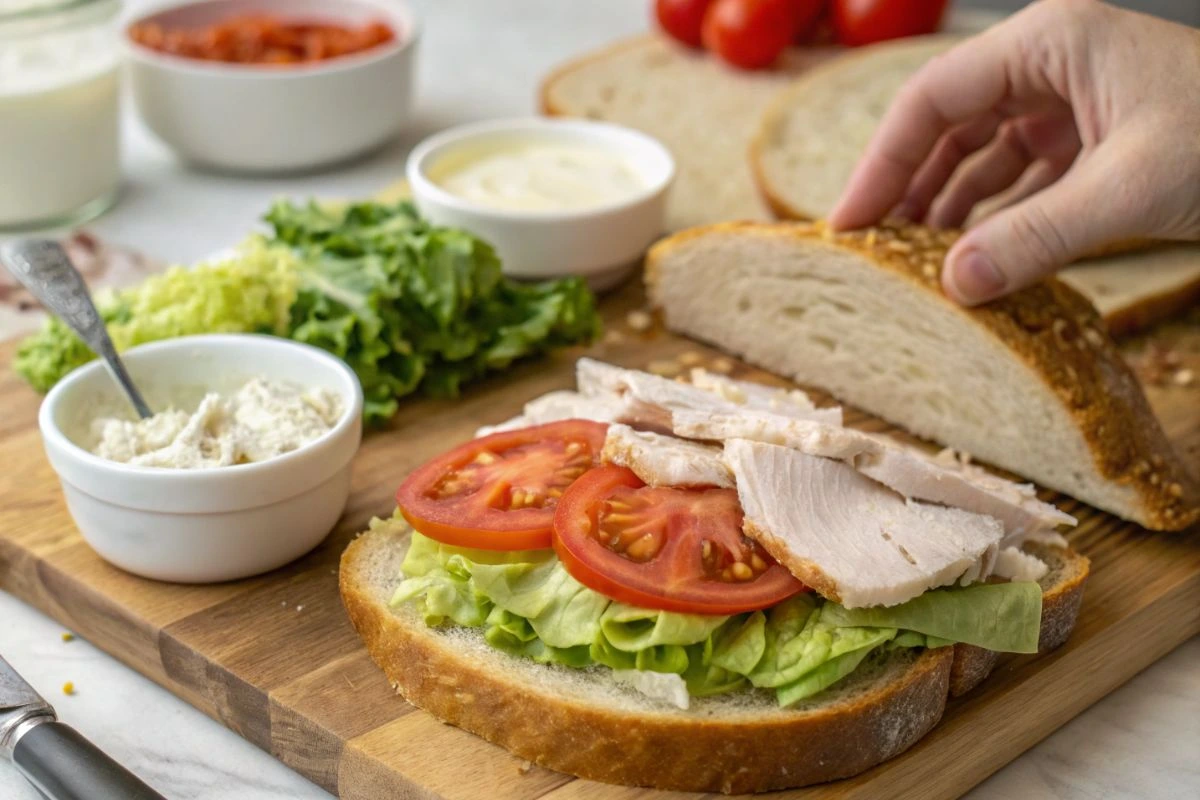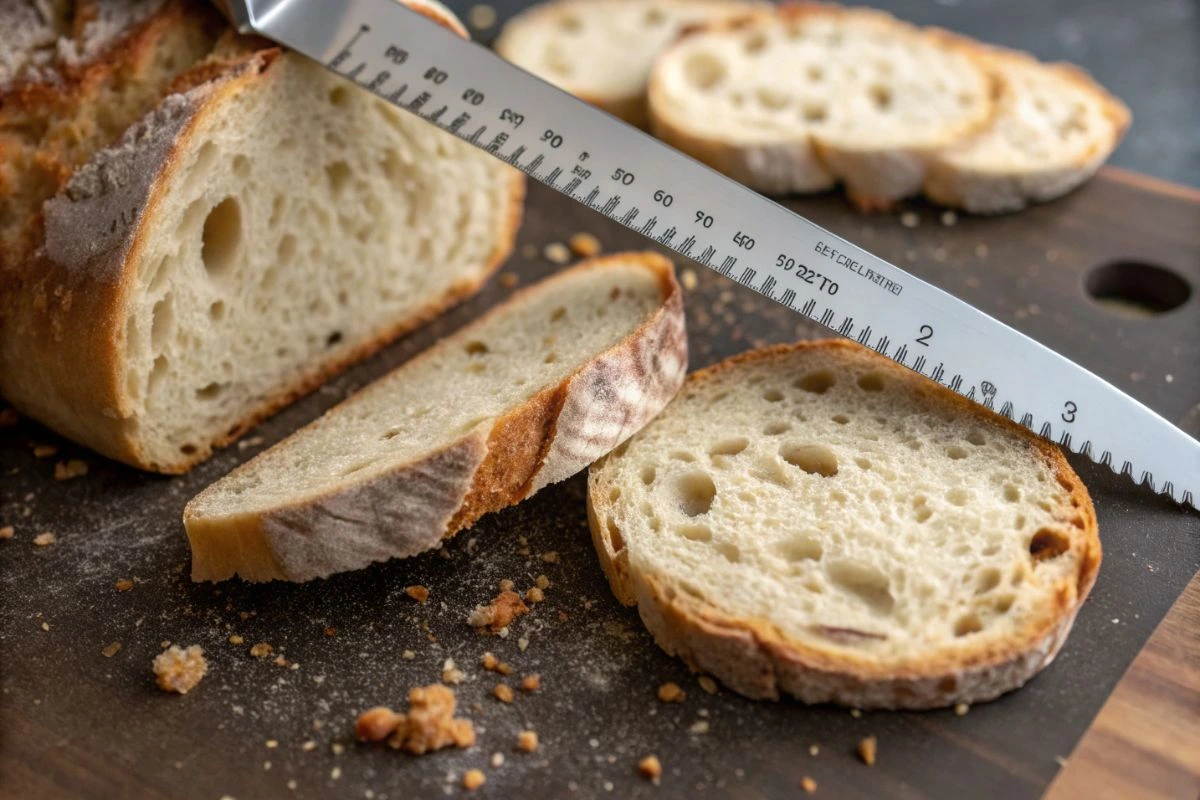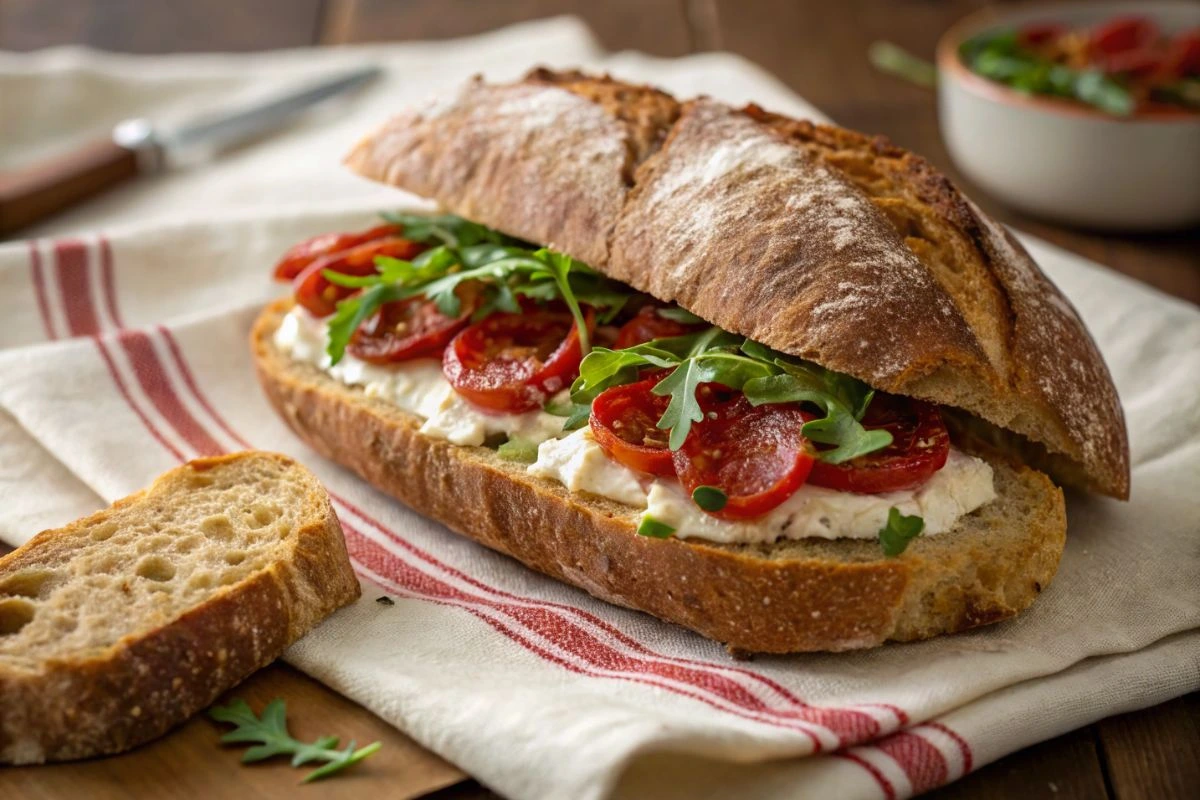Sandwiches are a beloved meal worldwide, versatile and endlessly customizable. But the foundation of any great sandwich is the bread. So, what type of bread is best for sandwiches? The answer hinges on factors like texture, flavor, and how well it pairs with your fillings. From soft white slices to crusty sourdough, this guide explores top options to help you choose wisely.
We’ll cover popular bread types, specialty options, and tips to perfect your sandwich game. Whether you’re after a classic or a dietary-specific choice, you’ll find the insights you need here.



Why Bread Choice Shapes Your Sandwich
Bread isn’t just a vehicle—it’s a key player in your sandwich’s success. What type of bread is best for sandwiches? It depends on how it supports and enhances your ingredients.
Texture’s Big Impact
A bread’s texture can define the experience. Soft varieties like brioche cradle light fillings, while robust loaves like sourdough tackle hearty stacks. The crumb—tight or open—affects how it holds up to spreads or sauces.
Flavor Harmony
Bread should complement its contents. Nutty whole wheat boosts a turkey sandwich, while mild white lets bold meats shine. Balance is everything.
Nutrition Matters
Bread also influences health. Whole grains add fiber, white bread offers simplicity, and specialty options cater to gluten-free or low-carb diets.
Top Bread Contenders for Sandwiches
Let’s dive into the best bread types and see how they answer, what type of bread is best for sandwiches?
White Bread: Timeless and Simple
White bread’s soft, uniform slices are a sandwich classic. It’s perfect for peanut butter or grilled cheese, thanks to its neutral taste.
- Pros: Soft, versatile, widely loved.
- Cons: Low in nutrients, prone to sogginess.
- Best for: Quick, light sandwiches.
A USDA report shows white bread tops U.S. consumption charts, a testament to its popularity.
Whole Wheat: Nutty and Nutritious
Whole wheat delivers a denser, fiber-rich option with a subtle earthy taste. It’s ideal for wholesome fillings.
- Pros: Healthy, hearty.
- Cons: Can dry out, flavor may dominate.
- Best for: Turkey or veggie combos.
Sourdough: Bold and Sturdy
Sourdough’s tangy bite and chewy crust make it a gourmet favorite. It stands up to saucy or meaty fillings effortlessly.
- Pros: Flavorful, durable.
- Cons: Crust can be tough for some.
- Best for: Reubens, pulled pork.
The National Institutes of Health highlights sourdough’s lower glycemic index, a bonus for health.
Rye: Deli-Style Star
Rye’s dense texture and bold flavor shine in deli classics like pastrami or corned beef sandwiches.
- Pros: Distinctive, strong.
- Cons: Not ideal for light fillings.
- Best for: Pastrami, strong cheeses.
Brioche: Rich and Sweet
Brioche offers a buttery, tender bite, perfect for indulgent sliders or grilled sandwiches.
- Pros: Luxurious, soft.
- Cons: Too delicate for heavy loads.
- Best for: Ham and cheese, burgers.
Specialty Breads Worth Considering
For unique needs or tastes, specialty breads step up. Here’s how they fit into, what type of bread is best for sandwiches?
Gluten-Free: Inclusive Eats
Modern gluten-free breads, made from rice or almond flour, rival traditional options in texture and taste.
- Pros: Diet-friendly, improving quality.
- Cons: Can crumble, higher cost.
- Best for: Toasted sandwiches.
Flatbreads: Global Flair
Pita, naan, and tortillas bring versatility, ideal for wraps or open-faced creations.
- Pros: Flexible, unique.
- Cons: Less classic sandwich appeal.
- Best for: Shawarma, falafel.
Keto Bread: Low-Carb Fix
Keto-friendly loaves, often almond- or coconut-based, suit carb-conscious diets without sacrificing sandwich potential.
- Pros: Low-carb, filling.
- Cons: Non-traditional texture.
- Best for: Bacon and avocado.
Picking the Perfect Bread
Choosing bread boils down to your sandwich’s needs. Here’s how to decide:
Fillings First
- Light: White or brioche for subtle flavors.
- Heavy: Sourdough or rye for robust stacks.
- Wet: Toasted wheat or ciabatta to stay intact.
Prep Style
- Toasted: Sourdough or white for crispness.
- Fresh: Brioche or rolls for softness.
- Wrapped: Tortillas or pita for portability.
Your Taste
Bold flavors call for rye or sourdough; mild preferences lean toward white or wheat. Try a few to find your match.
Sandwich-Making Tricks
Bread choice is step one—here’s how to nail the rest:
- Toast It: Adds crunch and fights sogginess.
- Slice Right: Thin for light, thick for hearty.
- Spread Wisely: Butter or mayo keeps moisture at bay.
Check out Serious Eats for more sandwich-building tips.
Bread Science 101
Bread’s magic lies in its makeup. Gluten provides strength, yeast lifts, and fermentation adds depth—key to sandwich success.
- Gluten: More means chewier, like sourdough.
- Moisture: Wet doughs yield airy crumbs; dry ones stay tight.
- Fermentation: Longer equals tastier, as in sourdough.
The American Society of Baking explains how these factors shape bread quality.
Ingredients for Homemade Sandwich Bread
Ready to bake your own? This simple recipe makes a soft, reliable loaf.
- 4 cups all-purpose flour: For structure.
- 1 ½ cups warm water: Activates yeast.
- 2 tbsp sugar: Feeds yeast, adds sweetness.
- 1 tbsp active dry yeast: Lifts dough.
- 2 tsp salt: Boosts flavor.
- 2 tbsp butter: Keeps it tender.
Steps: Mix yeast, sugar, and water; let foam. Add flour, salt, butter; knead until smooth. Rise 1 hour, shape, bake at 375°F for 30–35 minutes.
Frequently Asked Questions (FAQ)
1. Which bread holds up best with wet sandwich fillings?
Sourdough or ciabatta are top picks for wet fillings like tomatoes or saucy meats. Their sturdy structure and open crumb resist sogginess, especially when lightly toasted. Softer options like white bread may fall apart unless you add a barrier like butter.
2. Is whole wheat bread healthier than white bread for sandwiches?
Yes, whole wheat bread typically offers more fiber, vitamins, and minerals compared to white bread, which is often made from refined flour. However, it can be denser, so it’s best paired with hearty ingredients like turkey or avocado for a balanced bite.
3. Can gluten-free bread make a good sandwich?
Absolutely! Modern gluten-free breads, made from rice or almond flour, have improved in texture and taste. Toasting helps them hold together better, making them suitable for everything from ham to veggie stacks.
4. What’s the best bread for a grilled sandwich?
Sourdough and brioche shine in grilled sandwiches. Sourdough’s crusty exterior crisps up beautifully, while brioche’s buttery richness melts into a decadent treat. Both pair well with cheese or meats.
5. How do I keep my sandwich bread from getting soggy?
Toast the bread lightly or spread a thin layer of butter, mayo, or cream cheese on the inside. These tricks create a moisture barrier, keeping the bread intact even with juicy fillings like tuna or pickles.
6. Are flatbreads a good sandwich option?
Yes, flatbreads like pita or tortillas are excellent for wraps or open-faced sandwiches. They’re flexible, easy to stuff, and bring a global twist to your meal—think falafel or chicken shawarma.
7. What bread works best for a classic PB&J?
Soft white bread is the go-to for peanut butter and jelly. Its mild flavor and tender texture let the sweet and nutty spread shine without competing, making it a nostalgic favorite.
8. How thick should sandwich bread be sliced?
It depends on the sandwich. Thin slices (about ½ inch) suit light fillings like cucumber or egg salad, while thicker cuts (¾ to 1 inch) support heavier stacks like roast beef or BLTs. Adjust based on your preference!
9. Can I use homemade bread for sandwiches?
Definitely! Homemade bread lets you control texture and flavor. A basic loaf with flour, yeast, and butter (see the Ingredients section above) works for most sandwiches—just slice it evenly.
10. Does bread type affect sandwich nutrition?
Yes, bread choice impacts calories, carbs, and nutrients. White bread is higher in simple carbs, while whole grain or rye offers more fiber and protein. Keto or gluten-free options cater to specific dietary goals.
Conclusion
The best sandwich bread depends on your filling, style, and taste. White keeps it simple, sourdough adds flair, and specialty options like gluten-free fit unique needs. Experiment to find your perfect match—and enjoy the journey. What’s your favorite? Share below!

